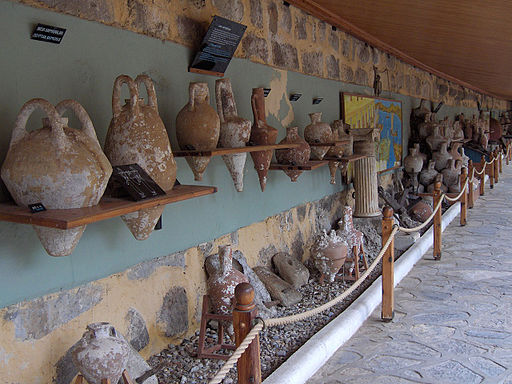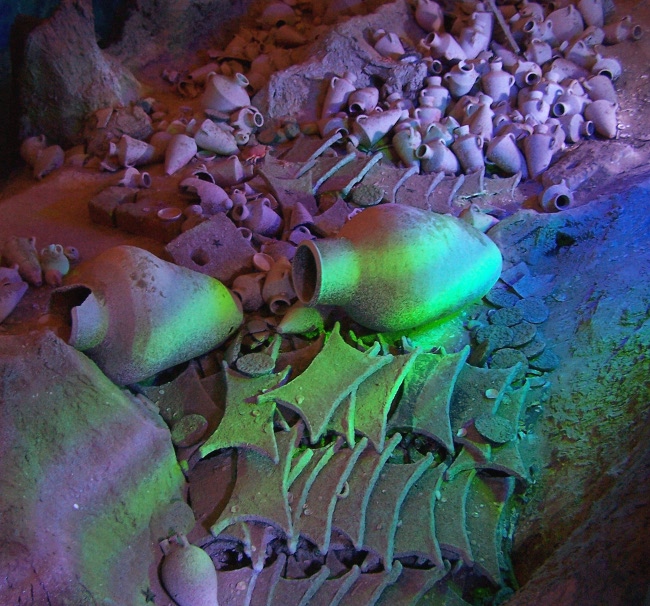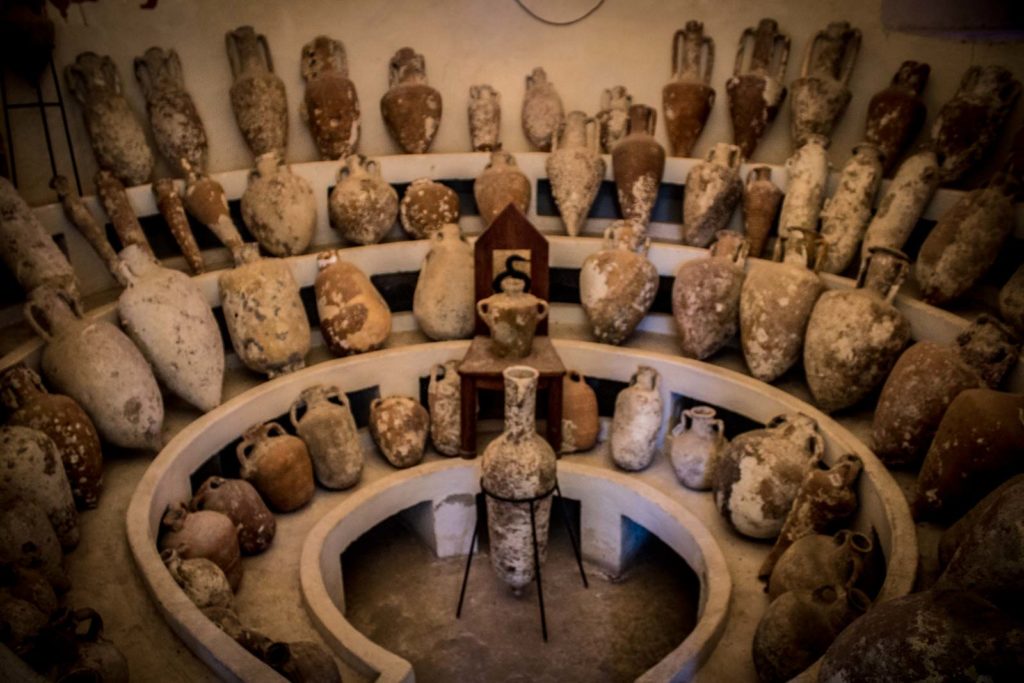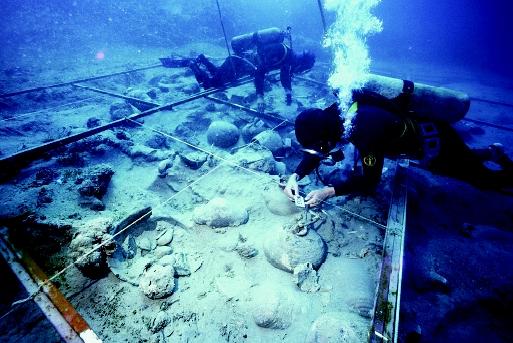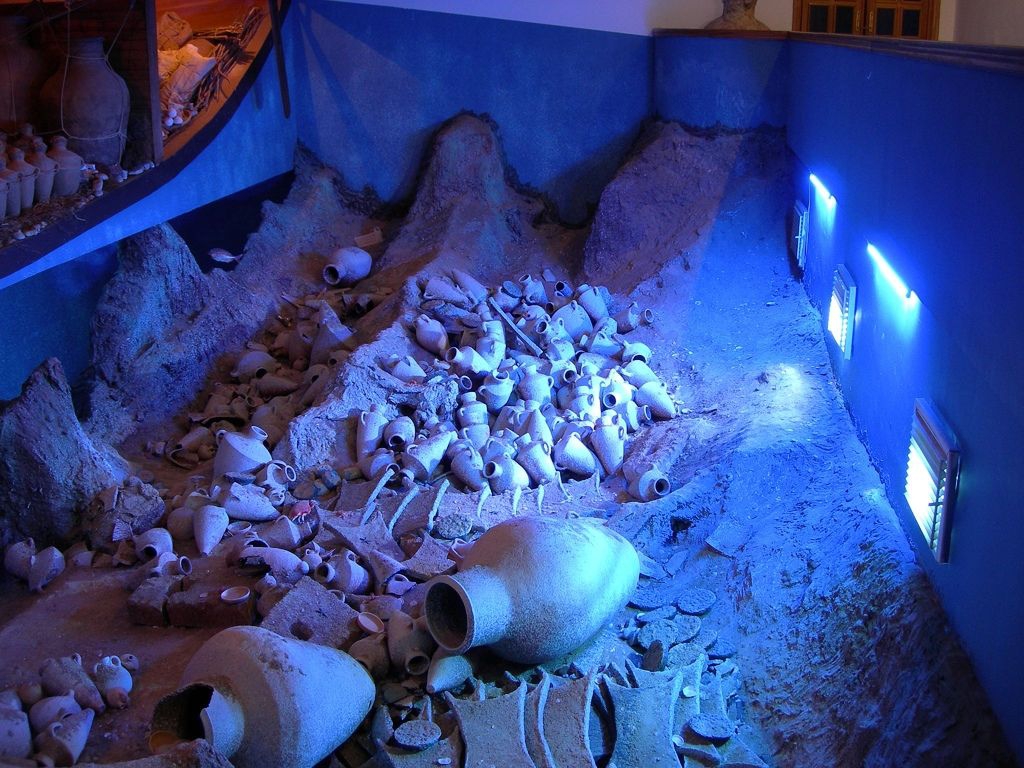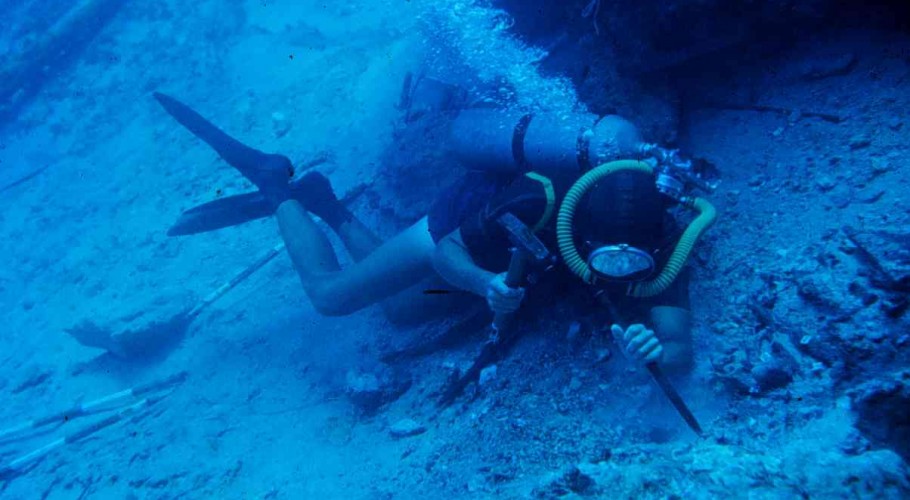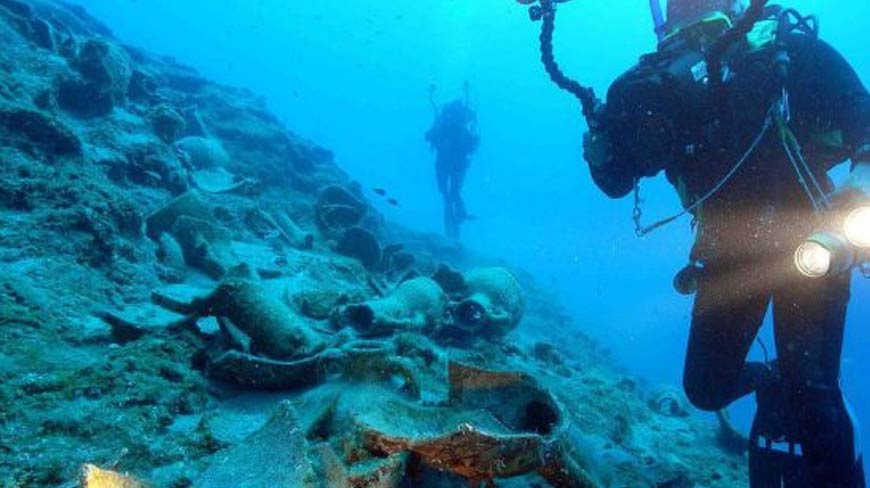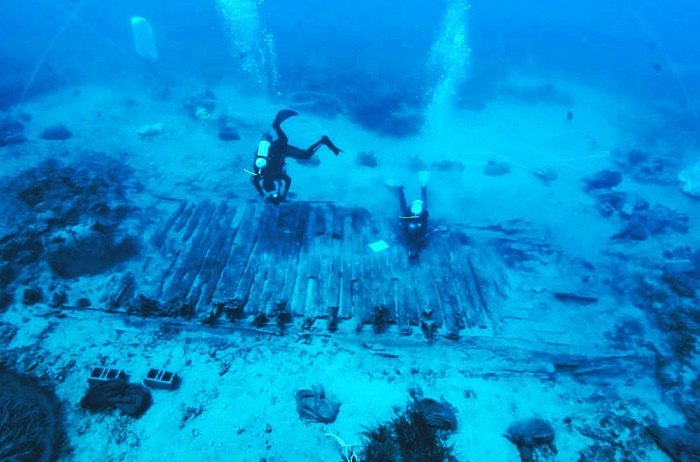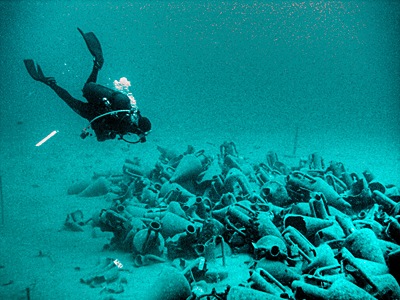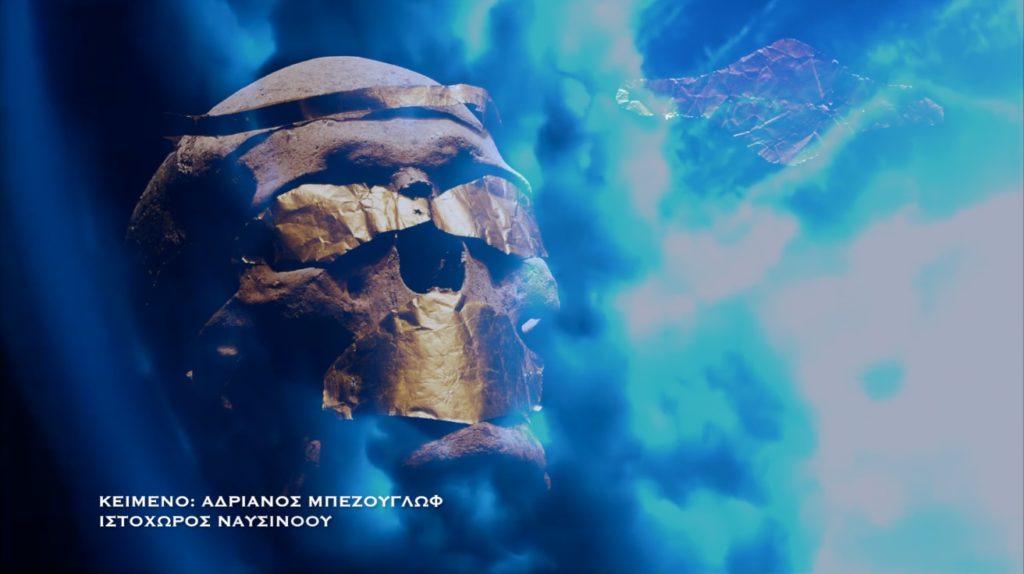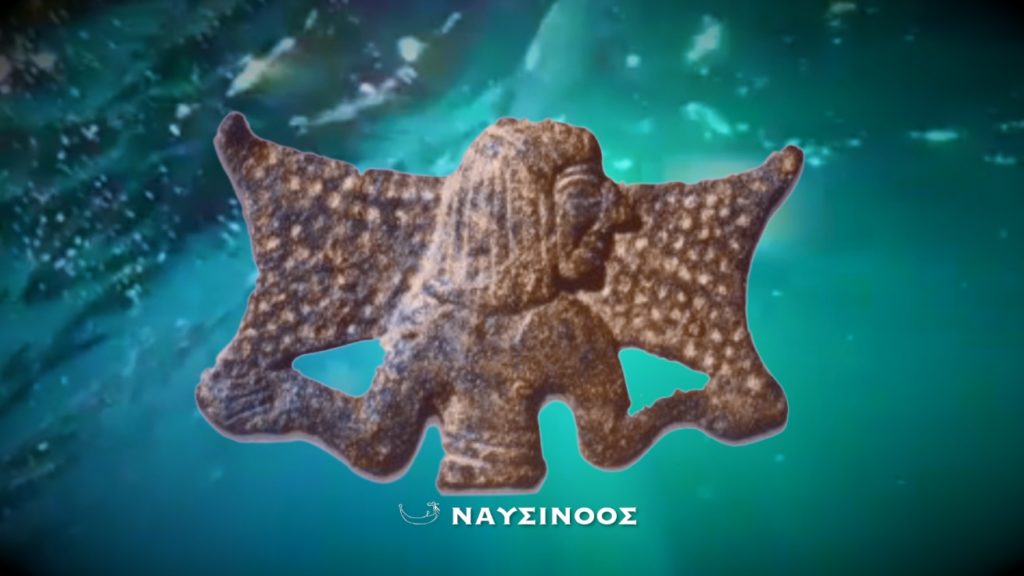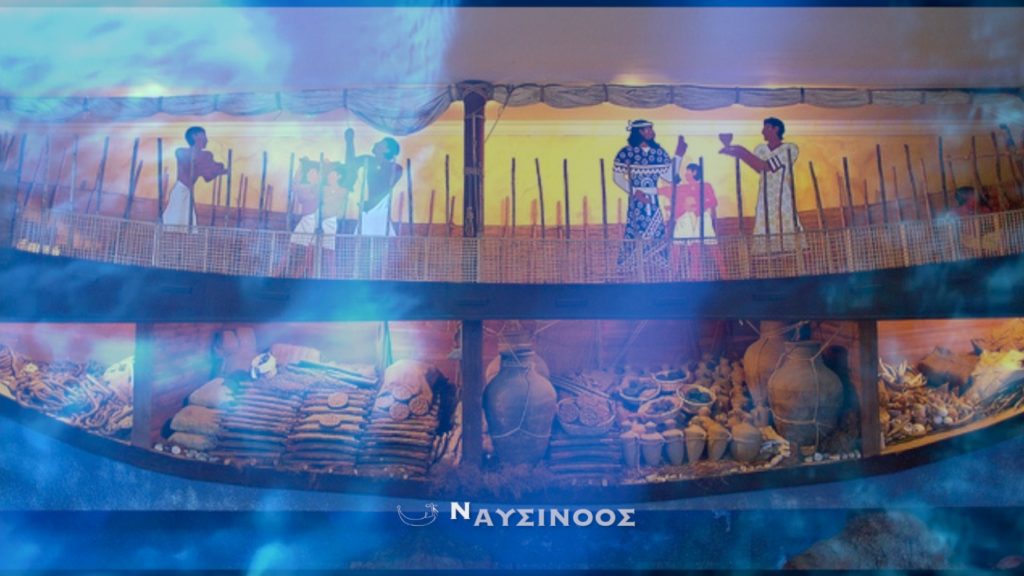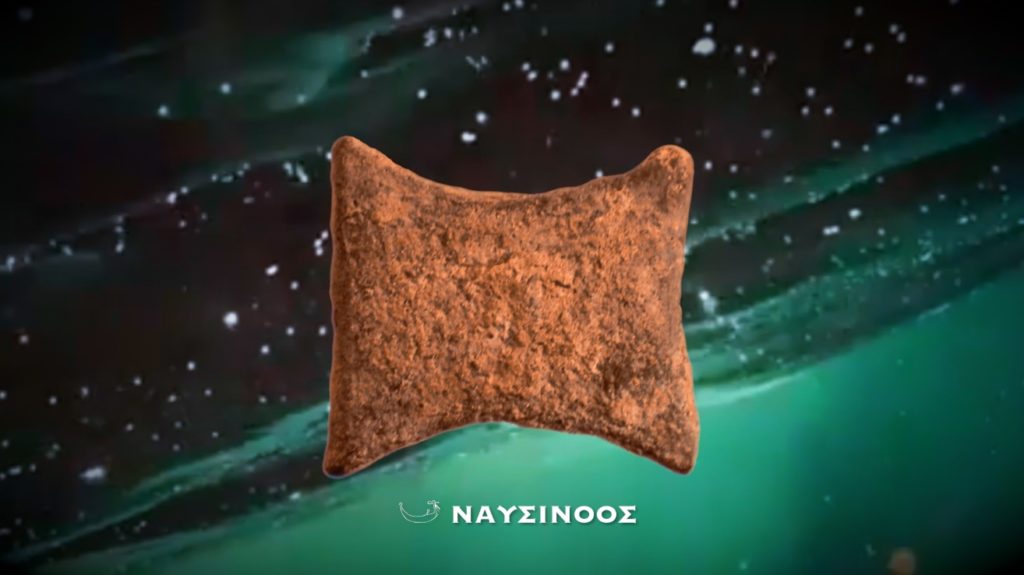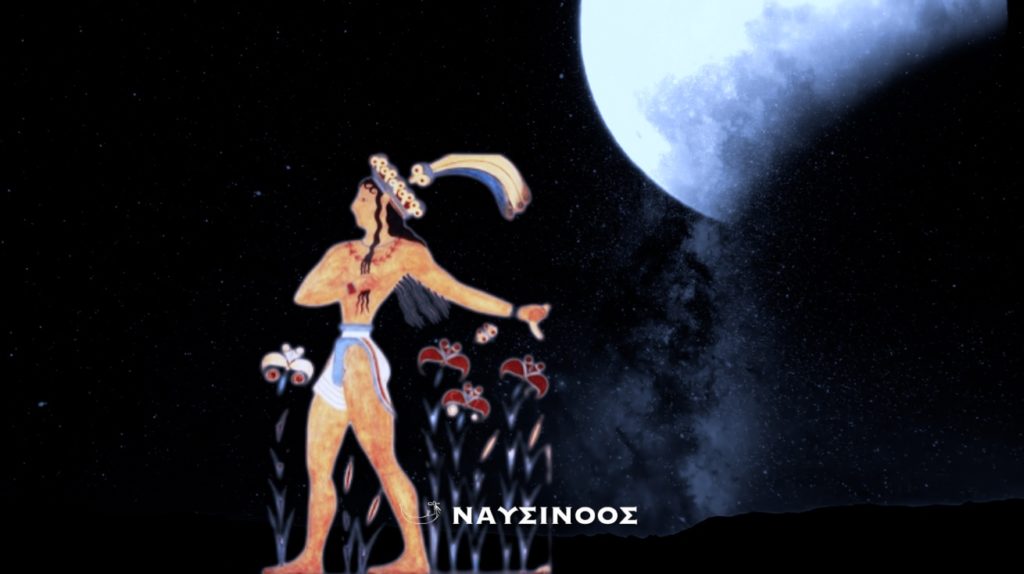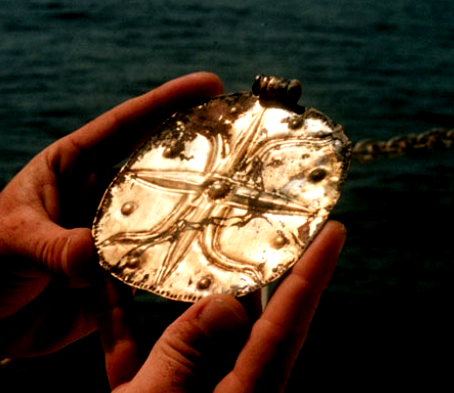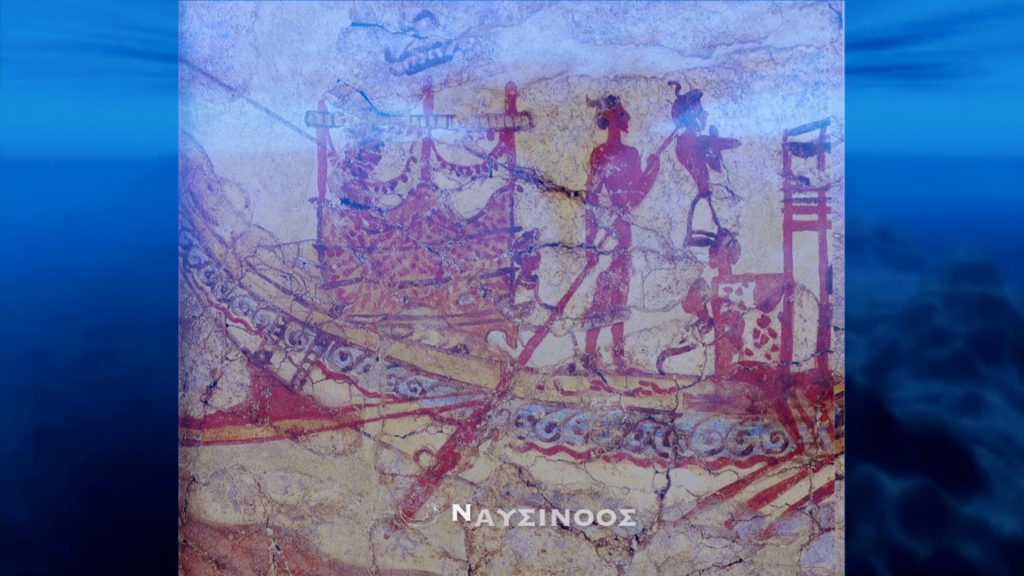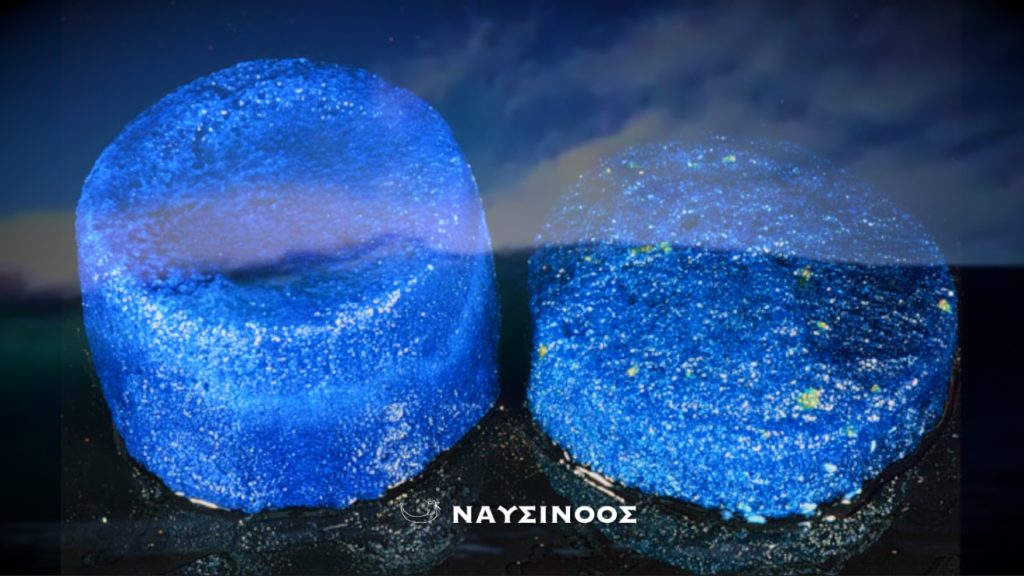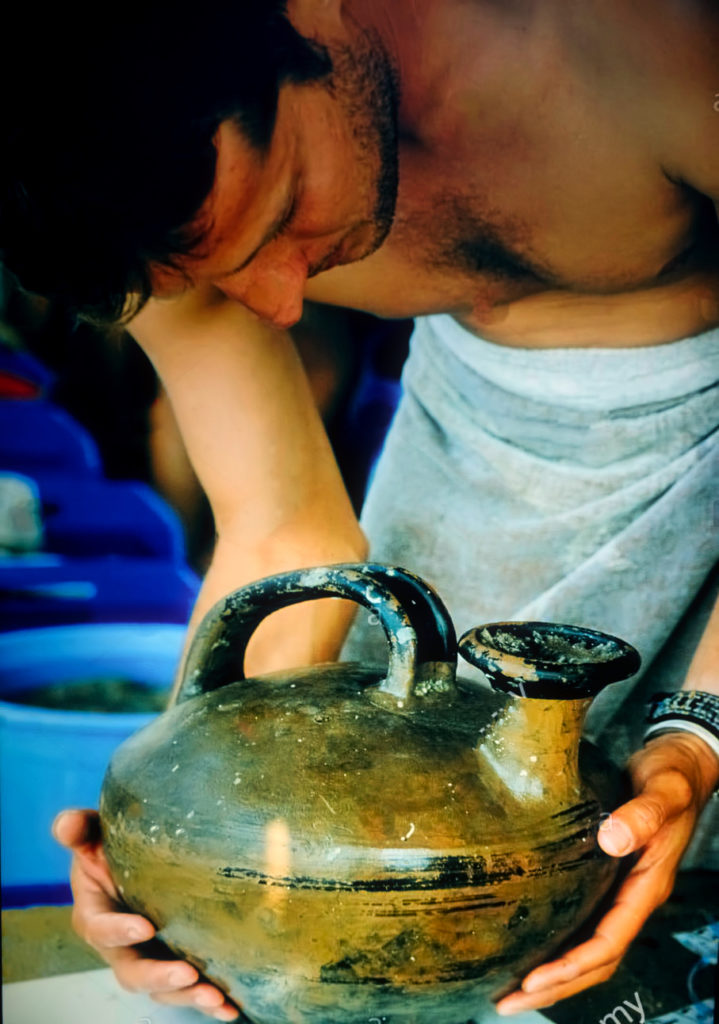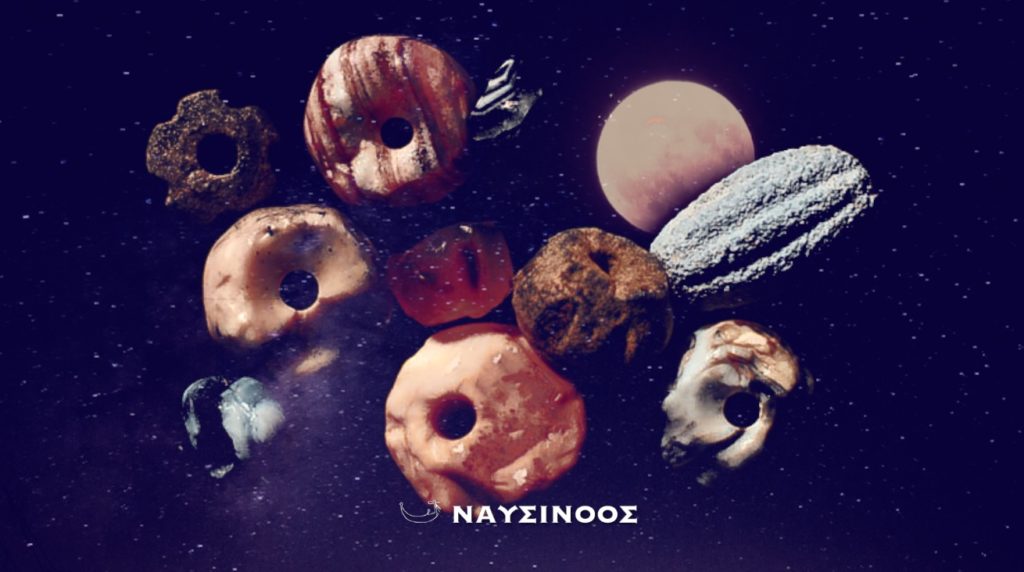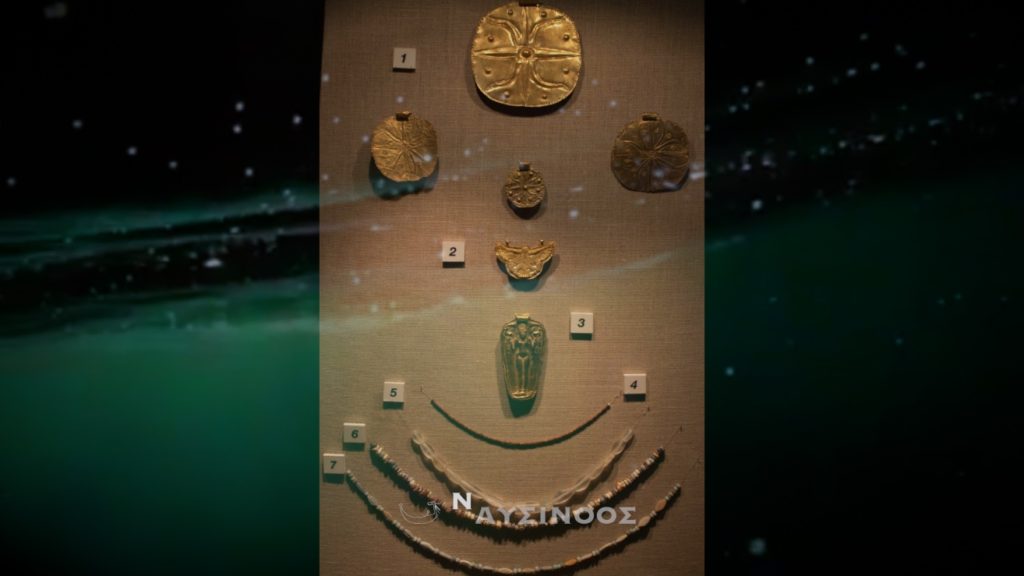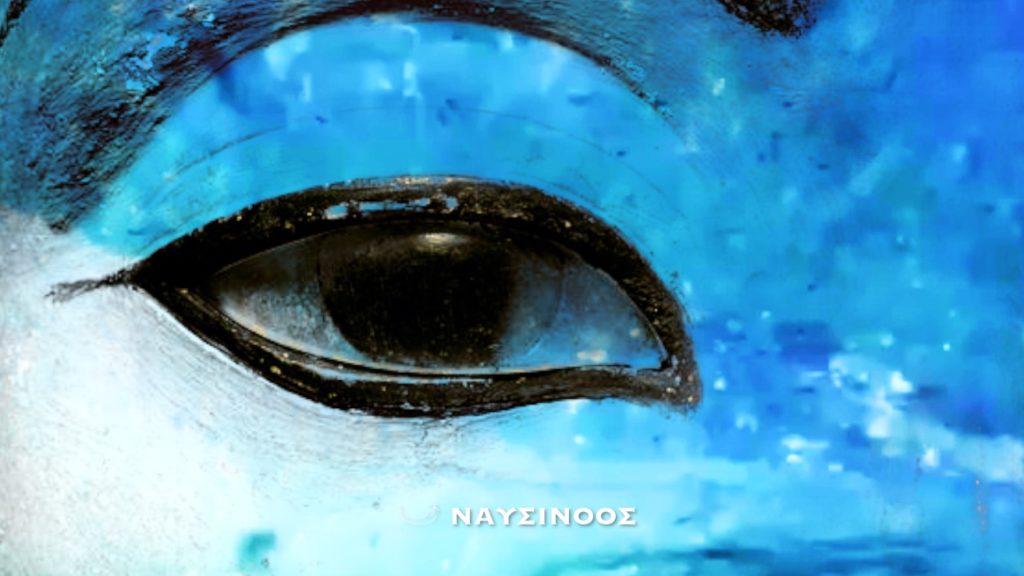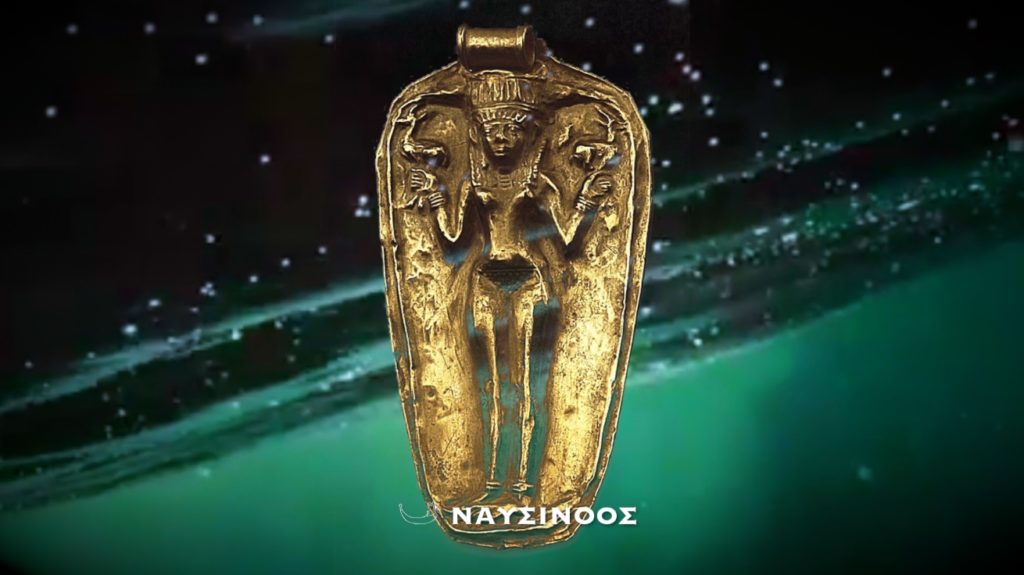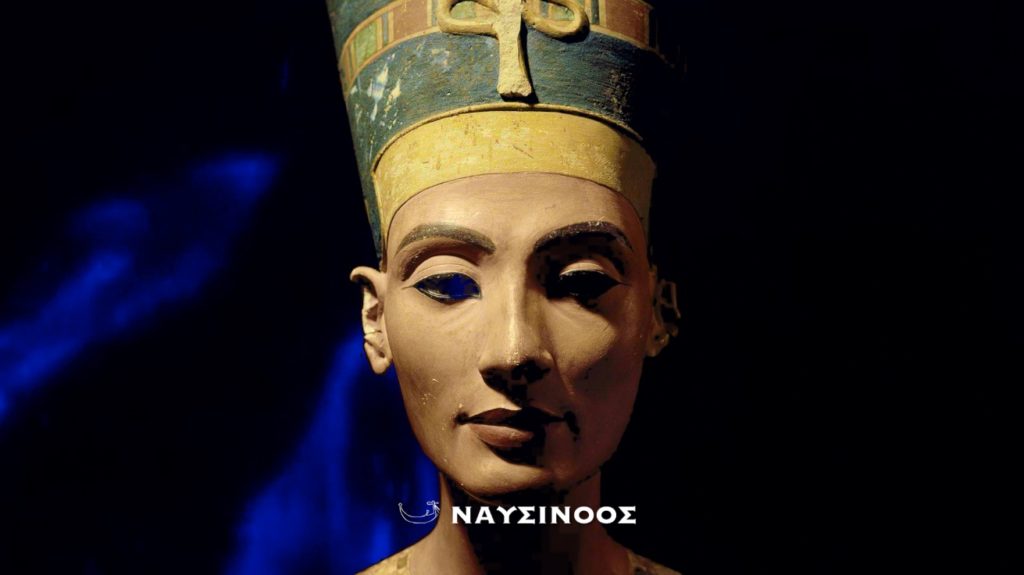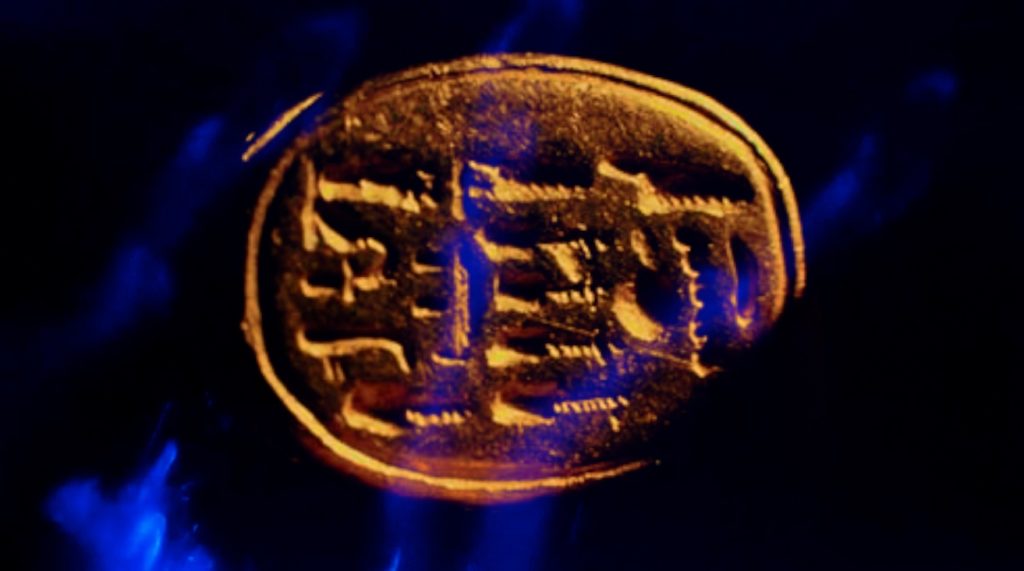Το 1982 έξω από τις ακτές του Ουλουμπούρουν στα Νότια παράλια της σημερινής Τουρκίας ανακαλύφθηκε από έναν σφουγκαρά, τον Μεχμέτ Τσακίρ ένα Μινωικό πλοίο με όλο του το εμπόρευμα σε βάθος 44 – 52 μέτρα. Το εμπόρευμά που κουβαλούσε ήταν σκορπισμένο στον βυθό ως τα 61 μέτρα βάθος και ζύγιζε περίπου 20 τόννους. Το Ινστιτούτο Ενάλλιων Αρχαιοτήτων έκανε συνολικά 22.413 καταδύσεις ανάμεσα στα 1984 και 1992 και συνέλλεξε 18.000 πολύ εντυπωσιακά αντικείμενα. Το φορτίο του συμπεριλάμβανε πολύτιμα κοσμήματα και πολυτελή πρώτες ύλες.
Το πλοίο θεωρήθηκε πως ήταν μια Βασιλική αποστολή. Είχε μήκος 15 μέτρα και είναι το αρχαιότερο παράδειγμα συγκεκριμένης κατασκευής που σήμερα ονομάζεται τεχνική mortise and tenon (ενώσεις με μόρσους) των σανίδων. Το ξύλο του ήταν εξολοκλήρου από κέδρο του Λιβάνου, ο οποίος φύεται στην Κύπρο, Κρήτη Λίβανο και αλλού.
Το φορτίο του συνδέει εφτά πολιτισμούς Κρητομυκηναίους, Συροπαλαιστίνιους, Κυπρίους, Αιγυπτίους, Κασσίτες (Βαβυλωνίους) Ασυρίους και Νουβίους. Πρόκειτε για ένα σπουδαίο παράδειγμα του Ελληνικού εμπορίου και των εξαγωγών σε άλλους τόπους Πελασγικής ή μη διασποράς και η προέλευσή του ήταν πιθανότατα η Κρήτη ή η Κύπρος ή κάποιο από τα νησιά του Αιγαίου.
Το φορτίο του ζύγιζε περίπου 20 τόννους. Δέκα εκ των οποίων ήταν χαλκός. Συγκεκριμένα 354 τάλαντα χαλκού ο οποίος θεωρήθηκε αρχικά Κυπριακής προελεύσεως. Επίσης κουβαλούσε 175 υαλόμαζες του αρχαιότερου γυαλιού που έχει βρεθεί, σε σχήμα δίσκων οι οποίες ήταν χρωματισμένες τυρκουάζ, μπλέ του κοβαλτίου αλλά και με μία μοναδική απόχρωση της λεβάντας. Στο φορτίο του βρέθηκε ακόμα ένας τόννος ρητίνης φυστικιού (τύπου Αιγίνης) μέσα σε αγγεία προφανώς για χρήση ιερατική, λιβάνισμα κλπ. Άλλες πρώτες ύλες περιελάμβαναν κορμούς Αιγυπτιακού Έβενου, Κελύφη αυγών στρουθοκαμήλου, ελεφαντόδοντα, δόντια ιπποποτάμου, κοχύλια και κελύφη χελωνών.
Τα επεξεργασμένα προϊόντα ήταν επίσης υπερπολυτελείας: Αιγυπτιακά αντικείμενα απο χρυσό, ήλεκτρο, ασήμι και πέτρα. Χαναϊτικά κοσμήματα, χιλιάδες χάντρες από γυαλί, αχάτη, σάρδιο (καρνεόλιο λίθο), κρύσταλλους κουάρτζ, φαγετιανή και κεχριμπάρι. Υψηλής τέχνης αγαλματίδια, συμπεριλαμβανομένου αγαλματιδίου γυναικείας μορφής μερικώς επιχρυσομένο κατά πάσα πιθανότητα Συροπαλαιστινιακής προελεύσεως. Ένα από τα μοναδικά ευρήματά του ήταν ένας σκαραβαίος με το καρτούς της Βασίλισσας Νεφερτίτης. Άλλα ευρήματα συμπεριλάμβαναν κουτιά καλλυντικών από ελεφαντόδοντο, πνευστό μουσικό όργανο από δόντι ιπποποτάμου, εργαλεία και όπλα, μολύβδινα βαρύδια διχτιών, βελλόνες για επιδιόρθωση διχτιών, αγκίστρια, καμάκια, μιά μπρούτζινη τρίαινα και ξύλινα αναλόγια για γραφή. Το μεγαλύτερο ποσοστό κατασκευασμένων ειδών προς πώληση που υπήρχε στο πλοίο ήταν εξέχοντα κεραμικά Κυπριακής προελεύσεως.
Η ανάλυση των προσωπικών αντικειμένων του πληρώματος του πλοίου έδειξε πως στην πλειοψηφία τους οι ναυτικοί ήταν Κύπριοι, ενώ μόνο δύο ήταν Μυκηναίοι.
Το 2002, 20 χρόνια μετά την ανακάλυψη του ναυαγίου, εξεδόθει μιά μελέτη (Hauptmann et al, on the “Structure and Composition of Ingots from the 1300 BC Uluburun Wreck”) για την δομή και την σύνθεση του χαλκού που βρισκόταν στο πλοίο αυτό. Τα αποτελέσματα της πρώτης αυτής έρευνας κατέδειξαν πως ο χαλκός είχε μιά ταυτότητα 99,5% καθαρότητας και ήταν μέρος του χαλκού που έχει βρεθεί στον Μινωικό πολιτισμό, παράδειγμα τάλαντα που βρέθηκαν στον Μινωικό οικισμό – ανάκτορο της Αγ. Τριάδος , κοντά στην Φαιστό (1550 1500 ΠΚΕ). Άλλα έχουν βρεθεί στην Σαρδηνία, στην Κύπρο, στο Δέλτα του Νείλου, στην Τουρκία, και στην Βουλγαρία.
Το εκπληκτικό στα αποτελέσματα της έρευνας αυτής η οποία επιβεβαιώθηκε από πολλά άλλα πανεπιστήμια ήταν πως ο χαλκός των Μινωιτών – Κρητών προέρχονταν από τον Καναδά και συγκεκριμένα από τις λίμνες Superior. Εξεδόθηκαν όλες αυτές οι έρευνες και έγιναν πολλές εκπομπές και όλοι οι επιστήμονες συμφωνούν σε αυτό το γεγονός που καταδεικνύει την εκμετάλευση του Καναδικού χαλκού από τους Έλληνες Κρήτες (Δωριείς – Μινύες) από το 2500 ΠΚΕ τουλάχιστον.

ΒΙΒΛΙΟΓΡΑΦΙΑ – ΠΗΓΕΣ – ΑΝΑΦΟΡΕΣ – ΕΡΓΑΣΙΕΣ – ΠΑΡΑΠΟΜΠΕΣ:
• 1. Drier, R.W., Du Temple, O.J., Prehistoric Mining in the Lake
Superior region, A Collection of Reference Articles, reprinted privately
January 2005, #367
• 2. Davies, W.V., Catalogue of Egyptian Antiquities in the British
Museum, VII, Tools and Weapons, Axes, British Museum Publications,
London, 1987 (ISBN 0 7141 0934 7)
• 3. Bailey, J., Sailing to Paradise, The Discovery of the Americas by
7000 BC, Simon & Schuster, New York, 1994, (ISBN 0-684-81297-5)
• 4. Rydholm, C.F., Michigan Copper, The Untold Story, A History of
Rediscovery, Winter Cabin Books, Marquette, 2006 (ISBN 0-9744679-2-8)
• 5. “Michigan’s Copper Country, The History of Copper Mining in
Michigan’s Upper Peninsula, featuring cooperating sites of the Kaweenaw
National Historical Park”, The History Channel, DVD,
www.keweenawvideo.com
• 6. TerHaar, C., “Isle Royale Impressions, Video DVD of the Wildlife,
Moods, and Scenery of Isle Royale National Park, set to Music”, Mackinac
Scenics, 803 Islington Rd., Cedarville, Mi 49719, 2004
• 7. Jewell, R.J., Ancient Mines of Kitchi-Gumi, Cypriot/Minoan Traders
in North America, Jewell Histories, Fairfield Pa., 2nd Ed, 2004 (ISBN
0-9678413-3-X)
• 8. Scott, D.A., and Meyers, P., Archeometry of Pre-Columbian Sites and
Artifacts, The Getty Conservation Institute, Los Angeles, 1994, (ISBN
0-89236-249-9)
• 9. O’Brien, W., Bronze Age Copper Mining in Britain and Ireland, Shire
Publications Ltd., Buckinghamshire, 1996 (ISBN 07478 0321 8)
• 10. Scheel, B., Egyptian Metalworking and Tools, Shire Publications Ltd., Aylesbury, 1989 (ISBN 0 7478 0001 4)
• 11. Martin, S.R., Wonderful Power, The Story of Ancient Copper Working
in the Lake Superior Basin, Wayne State Univ. Press, Detroit, 1999
(ISBN 0-8143-2843-1)
• 12. Trevelyan, A.M., Miskwabik, Metal of Ritual, Metallurgy in
Precontact Eastern North America, U. Press of Kentucky, Louisville, 2004
(ISBN 0-8131-2272-4)
• 13. Childress, D.H., Lost Cities of Atlantis, Ancient Europe & the
Mediterranean, Adventures Unlimited Press, Stelle, Ill., 1996 (ISBN
0-932813-25-9)
• 14. Taylour, L.W., The Mycenaeans, Thames & Hudson, 1964 and 1983, New York (ISBN 0-500-27586-6)
• 15. Milner, G.R., The Moundbuilders, Ancient Peoples of Eastern North
America, Thames and Hudson, London, 2004, (ISBN 0-500-28468-7)
• 16. Burgess, C., The Age of Stonehenge, Castle Books, Edison, N.J.,1980-2003 (ISBN 0-7858-1593-7)
• 17. De Jonge, R.M., and Wakefield, J.S., How the SunGod Reached
America c.2500 BC, A Guide to Megalithic Sites, MCS., Kirkland, Wa. 2002
(ISBN 0-917054-19-9)
• 18. Whittlesey, C., Ancient Mining on the Shores of Lake Superior,
Smithsonian Contributions to Knowledge, 1862, reprinted 2007 Gustavs
Library, Davenport Iowa, no ISBN
• 19. Henderson, J., The Science and Archaeology of Materials, An
Investigation of Inorganic Materials, Routledge, New York, 2000, (ISBN
0-415-19934-4)
• 20. Halsey, J.R., Miskwabik – Red Metal, The Roles Played by
Michigan’s Copper in Prehistoric North America, Michigan Dept of State,
no date, publisher, or ISBN
• 21. Dickinson, O., The Aegean Bronze Age, Cambridge University Press, New York, 1994 (ISBN 0-521-456649)
• 22. Schertz, J.P., Old Water Levels and Waterways During the Ancient
Copper Mining Era (about 3000 BC to 1000 BC), 1999, no ISBN
• 23. Gale, N.H., Bronze Age Trade in the Mediterranean, Papers
Presented at the Conference held at Rewley House, Oxford, 1989, /Studies
in Mediterranean Archaeology Vol.XC, Paul Astroms Forlag, 1991, no
ISBN, Weiner, M.H., “The Nature and Control of Minoan Foreign Trade”
• 24. Isle Royale National Park, National Geographic Trails Illustrated Map, www.nationalgeographic.com/maps
• 25. Griffin, J.B., Lake Superior Copper and the Indians: Miscellaneous
Studies of Great Lakes Prehistory, Anthropological Papers, Museum of
Anthropology, University of Michigan No.17, Ann Arbor, 1961
• 26. Rothenburg B., Tylecote, R.F., Boydell, P.J., Chalcolithic Copper
Smelting, Excavations and Experiments, Archaeo-Metallurgy/ Number One,
Institute for Archaeo-Metallurgical Studies, London, 1978,(ISBN 0 906183
00 6)
• 27. Huber, N.K., The Geologic Story of Isle Royale National Park,
Formerly U.S. Geologic Survey Bulletin 1309, 1983-1996, Isle Royale
Natural History Association, Houghton, Mi (ISBN 0 932212-89-1)
• 28. Barber, M., Bronze and the Bronze Age, Metalworking and Society in
Britain c.2500-800 BC, Tempus, Gloustershire, 2003 (ISBN 0-7524 2507 2)
• 29. Moore, C.N., Bronze Age Metalwork in Salisbury Museum, Salisbury
and South Wiltshire Museum Occasional Publication, 1972, no ISBN
• 30. Gore, R., “Men of the Sea, A Lost History, Who were the
Phoenicians?, National Geographic, October 2004,
nationalgeographic.com/magazine
• 31. Wood, D.J., “Bronze Age Michigan” a final of 3 parts, Ancient American, Vol.8, no.51, pg.21
• 32. Rydholm, F., “Old World Copper Miners of Ancient Michigan”, The Barnes Review, July/Aug, 2002 Vol.VIII, No.4, pg.37
• 33. “Missing Link Discovered”, Ancient American, Issue #12, pg.14
• 34. Carter, G.F., and Razi, H., “Chemical Composition of Copper-Based
Coins of the Roman Republic, 217-31 BC”, American Chemical Soc, Advances
in Chemistry Series 220, Archaeological Chemistry IV, 1989, pg. 213
• 35. Gale, N.H., and Stos-Gale, Z.A., “Bronze Age Archaeometallurgy of
the Mediterranean: The Impact of Lead Isotope Studies”, American
Chemical Society, advances in Chemistry Series 220, Archaeological
Chemistry IV, 1989, pg.160
• 36. Great Lakes, National Geographic Society, 1987
• 37. Ozment,K., “Journey to the Copper Age”, National Geographic, Vol. 195, No.4., April 1999 pg.70
• 38. Marquis, A.L., “Fighting Gravity, Saving What Remains of
Michigan’s 19th Century Copper Industry”, National Parks, winter 2009,
pg. 14
• 39. Carter, L.D., and Cheesman, P.R., “Michigan’s Mound Builders,
Historical Background of the Soper-Savage Collection of Inscriptions and
Photographs”, Ancient American, Issue #53, pg.2
• 40. Avery, R., Copper Country –God’s Country, Avery Color Studios, 1973, no ISBN
• 41. Pleger, T.C., “The Old Copper Complex of the Western Great Lakes”, 2000, www.fox.uwc.edu/depts/tpleger/oldcopper.html
• 42. Viegas, J., “Ancient Metalworking Recreated”, April 2005, www.disc.discovery.com/news/briefs/2005050425/metalworking.html
• 43. Wagner, H., “Wiconsin’s Ancient Copper Miners”, From Wisconsin Outdoor Journal, Ancient American, No. 75
• 44. Stos-Gale, Z.A., Maliotis,G., Gale, N.H., and Annetts, N., “Lead
Isotope Characteristics of the Cyprus Copper Ore Deposits Applied to
Provenance Studies of Copper Oxhide Ingots”, Archaeometry, Vol.39, Issue
1 Feb 1997, Pg.83-123
• 45. Ackley, J., Strauss Center for Conservation, Harvard Univ. Art
Museums, personal email re: Knapp, S., “Mystery in Bronze”, Dartmouth
Life, Pg.4, April 2003
• 46. Freeman, A.M., “Copper Artifacts: Correlation with Source Types of Copper Ores”, Science, Vol. 152, 1996, pg 1504
• 47. Hancock, R.G.V., Pavlish, L.A., Salloum, R.M., Fox, W.A., Wilson,
G.C., “Distinguishing European Trade Copper and North-Eastern North
American Native Copper”, Archaeometry 33, 1991 69-86
• 48. Fitzgerald, W.R., Ramsden, P.G., “Copper Based Metal Testing as an
Aid to Understanding Early European- Amerindian Interaction: Scratching
the Surface”, Canadian Journal of Archaeology, Vol.12, 1988
• 49. Martin, S.R., “The State of Our Knowledge about Ancient Copper
Mining in Michigan”, The Michigan Archaeologist, 31 (2-3):119-138
• 50. Guerra, M.F., “Analysis of Archaeological Metals. The Place of XRF
and PIXE in the Determination of Technology and Provenance”, X-Ray
Spectrometry, Vol.27, 73-80, 1998
• 51. Budd, P., “Seeking the Origins of Bronze Tools”, British Archaeology, No.36, July, 1998: Features
• 52. “Uluburun Shipwreck”, http://uluburun-shipwreck.area51.ipupdater.com/
• 53. Rapp, G. Jr., Allert, J., Hendrickson, E., “Trace Element
Discrimination of Discrete Sources of Native Copper”, American Chemical
Society, 14, pg.270-293, 1984
• 54. Hauptmann, A., Maddin, R., Prange, M., “On the structure and
Composition of Copper and Tin Ingots Excavated from the Shipwreck of
Uluburun”, American Schools of Oriental Research, Bulletin No.328,
pgs.1-30, Nov.2002
• 55. Budd, P., Pollard, A.M., Scaife, B., Thomas, R.G., “Oxhide Ingots,
Recycling and the Mediterranean Metals Trade”, Journal of Mediterranean
Archaeology, Vol.8, Issue 1, 1995 pgs.1-32, ISSN: 0952-7648
• 56. Stos-Gale, Z.A., Gale, N.H., Bass, G., Pulak, C., Galili, E.,
Sharvit, J., “The Copper and Tin Ingots of the Late Bronze Age
Mediterranean: New Scientific Evidence”, Proceedings of the Fourth
International Conference on the Beginning of the Use of Metals and
Alloys (BUMA-IV), The Japan Institute of Metals – Aoba, Japan, 1998, pp.
115-126.
• 57. Salter, C.J., Northover, J.P., Jones, S., “Study of possible
Bronze Age copper smelting debris from the Great Orme, Gwynedd, Wales”,
Gwynedd Archaeological Trust, Current Research Projects, Oxford Material
Science- Based Archaeology Group Index (abstract)
• 58. Ixer, R.A., “The Role of Ore Geology and Ores in the
Archaeological Provenancing of Metals”,
http://www.rosiehardman.com/harvard.htm
• 59. Joel, E.C., Sayre, E., Vocke, R., “Statistical Evaluation of the
Lead Isotope Data on Geological Ore Samples from Western and Central
Europe”, Smithsonian Center for Materials Research and Education, SCMRE
Research Report FY 1993: Historical Archaeology,
http://www.si.edu/scmre/about/93histarch.htm
• 60. Srinivasan, S., “The Use of Tin and Bronze in Prehistoric Southern Indian Metallurgy”, JOM, July, 1998
• 61. Ancient Cyprus Web Project, Bibliographies: Metallurgy 1990s, http://www.ancientcyprus.ac.uk/bibliographies/metal90.asp
• 62. Cherry, J.F., “Economy & Trade in the Later Bronze Age Aegean
and East Mediterranean, Graduate Seminar,
http://proteus.brown.edu/bronzeageeconomy/Home
• 63. Goodway, M., “Metals in Antiquity”, Smithsonian Center for
Materials Research and Education,
http://www.socarchsci.org/bulletin/9809/9809q.htm
• 64. Arch-Metals Archaeo-Metallurgical Bibliography, http://usersox.ac.uk/~salter/arch-metals/met-bib-ak.htm
• 65. Bass, G.F., and Pulak ,C., “Bronze Age Shipwreck Excavation at Uluburun”, http://ina.tamu.edu/ub_main.htm
• 66. Budd, P., “Seeking the origins of bronze tools”, British Archaeology, No.36, July 1998 Features
• 67. Viegas, J., “Ancient Metalworking Recreated, Ancient Metalworkers
Burned Out of History”, Discovery News,
http://dsc.discovery,.com/news/briefs/20050425/metalworking.html
• 68. Friedman, A.M., Conway, M., Kastner, M., Milsted, J., Metta, D.,
Fields, P.R., Olsen, E., “Copper Artifacts: Correlation with source
Types of Copper Ores”, Science, Vol 152, 10 June 1966, pg 1504-06.
• 69. Cornell, M.F., Prehistoric Relics of the Mound Builders, Battle Creek, Michigan, 1892
• 70. Rapp, G., Copper Project Database, Archaeometry Laboratory, 214 RLB, University of Minnesota, Duluth, 55812
• 71. Halpern, Z., personal email 10/16/2007
• 72. Glascock, M.D., Archaeometry Laboratory, University of Missouri
Research Reactor, Columbia, Mo. 65211, GlasscockM@missouri.edu
• 73. Analytical Chemistry, Tukwila, Wa. 206-622-8353, www.ancheminc.com
• 74. http://www.museum.mtu.edu , www.mg.mtu.edu-district4.gif , www.mg.mtu.edu/hist.htm
• 75. Roach, J., “Bronze Age Factory Discovered in Jordan”, National
Geographic News 6/25/2002,
http://news.nationalgeographic.com/news/2002/06/0620_020625_metalfactory.html
• 76. May, W., “Missing Link Discovered”, Ancient American, Issue #12, pg.14
• 77. Childress, D.H., Lost Cities of North and Central America,
Adventures Unlimited Press, Illinois, 1992, (ISBN 0- 932813-09-7)
• 78. Herrmann, P., Conquest by Man, Harper & Brthers., N.Y., 1954
• 79. Wilkins, H., Secret Cities of South America, 1952, Adventures Unlimited Press, Kempton, Ill, p.291-292.
• 80. Farnoux, A., Knossos, Abrams Inc., (ISBN 0-8109-2819-1)


